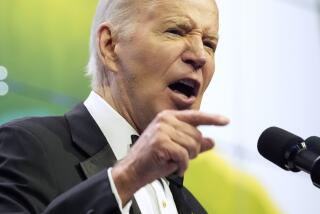Cost Rises for Airliner Antimissile Defense
- Share via
WASHINGTON — The Bush administration plans to spend about $100 million to develop an antimissile system for commercial planes, more than originally discussed, reflecting concern that terrorists might try to use shoulder-fired rockets to shoot down an aircraft.
The Department of Homeland Security has told defense contractors it is seeking proposals, agency spokesman Brian Roehrkasse said Thursday.
“This solicitation represents another important step in trying to determine if in fact there is a viable and effective technology that could be deployed on commercial aircraft,” Roehrkasse said.
Congressional budget negotiators Wednesday agreed to give the Department of Homeland Security $60 million in 2004 to start developing the technology.
The Bush administration has been criticized by some lawmakers who say it has not taken the missile threat seriously enough. Under pressure, the administration last spring said it would need about $60 million to develop antimissile technology, but never specifically asked for the funds.
The latest proposal calls for spending $100 million over two years. It does not seek new technologies, but rather encourages contractors to use existing defenses such as infrared jammers that redirect heat-seeking rockets away from aircraft engines. Such methods are used on military planes and Air Force One.
The administration’s announcement outlines a two-pronged effort, beginning with a six-month Phase I that explores the system’s cost and reliability. Phase II, which will take 18 months, will demonstrate, test and evaluate the systems.
Sen. Charles E. Schumer (D-N.Y). has sponsored a bill to equip the 6,800 planes in the U.S. commercial fleet with some form of antimissile device at an estimated cost of $10 billion.
“I don’t think we can afford to wait two years,” Schumer said. “They still don’t have the realization that we should be doing it far more quickly than we’re doing it, and they should be spending more money.”
More to Read
Get the L.A. Times Politics newsletter
Deeply reported insights into legislation, politics and policy from Sacramento, Washington and beyond. In your inbox twice per week.
You may occasionally receive promotional content from the Los Angeles Times.










